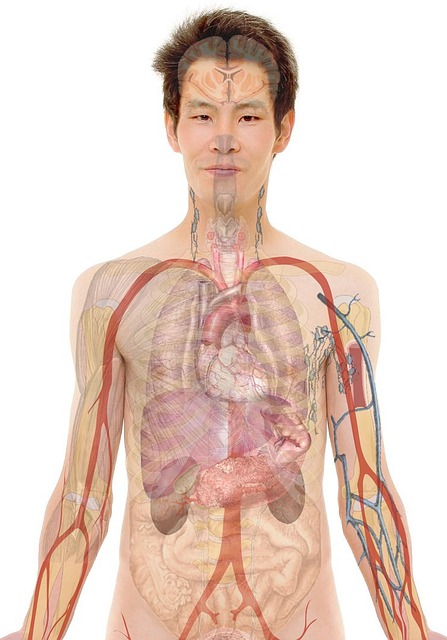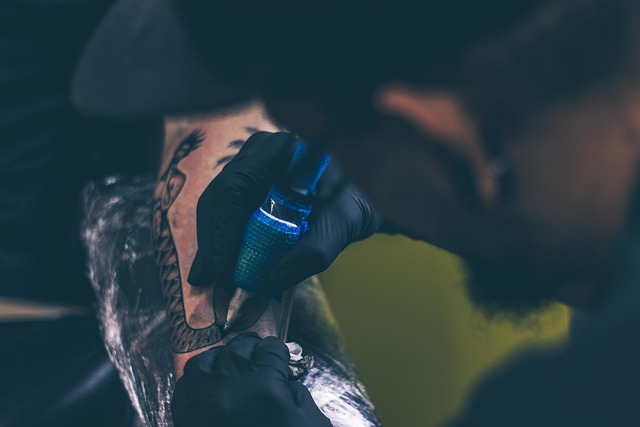Full-body skin tightening offers a non-surgical solution to achieve firm, smooth skin using advanced technologies like radiofrequency, laser, or ultrasound. It stimulates collagen production and tightens skin from within, addressing loose skin caused by aging, weight changes, and hormonal shifts. Effective products and at-home devices, when used consistently, can deliver noticeable results, but it's crucial to consult a dermatologist for safe options tailored to individual needs. Real-life success stories highlight its ability to significantly improve skin texture and tone without surgery or lengthy recovery times.
“Discover effective ways to achieve full-body skin tightening without undergoing invasive surgery. This comprehensive guide explores diverse methods, from topical treatments and lifestyle changes to cutting-edge technologies like lasers and radiofrequency. Learn about the science behind non-surgical skin tightening, its benefits, and potential risks. Uncover expert insights through case studies, empowering you to make informed decisions towards a more youthful appearance.”
Understanding Full-Body Skin Tightening: The Non-Surgical Approach

Full-body skin tightening is a non-surgical procedure designed to improve the appearance and elasticity of skin across various areas of the body simultaneously. Unlike traditional cosmetic surgeries, this approach offers a less invasive way to achieve firmer, smoother skin without incisions or extended recovery periods. It’s ideal for individuals looking to reduce loose skin, improve body contouring, and enhance overall skin tone.
The procedure leverages advanced technologies like radiofrequency, laser, or ultrasonic energy to stimulate collagen production and tighten the skin from within. These devices target deep layers of skin, causing minimal discomfort while safely breaking down and reorganizing collagen fibers. As a result, skin is tightened, and its elasticity is improved, leading to a more youthful appearance.
Common Causes of Sagging Skin and Loose Skin Tissues

Sagging skin and loose skin tissues are common concerns, often arising due to various factors that contribute to skin elasticity loss over time. Ageing is a significant culprit, as collagen production decreases with age, leading to reduced skin firmness. Environmental factors play a role too; exposure to UV rays can break down collagen and elastin fibres, resulting in skin laxity.
Additionally, weight fluctuations, whether through substantial weight loss or gain, can stretch and weaken skin’s support structure. Pregnancy and childbirth are also catalysts for skin sagging due to the dramatic hormonal shifts and stretching of the abdomen, breast, and thigh areas. These factors underscore the need for non-invasive full-body skin tightening procedures, offering a solution for those seeking to regain their skin’s youthful tone and texture.
Topical Treatments for Skin Tightening: What Works and What Doesn't

Topical treatments have gained popularity as a non-surgical approach to achieving full-body skin tightening. While many products promise dramatic results, it’s essential to discern what truly works and what doesn’t live up to its claims. The key to successful topical skin tightening lies in understanding the science behind different active ingredients.
Some topicals use ingredients like retinol, which stimulates collagen production and improves skin elasticity over time. Others incorporate peptides, known for their ability to signal fibroblasts to produce more collagen and elastin. Still, other options feature ingredients like glycolic acid or salicylic acid, which exfoliate dead skin cells, revealing smoother, tighter-looking skin beneath. However, it’s crucial to choose products with high concentrations and consistent application routines for noticeable results. Those claiming immediate, drastic changes are likely using misleading marketing tactics, as full-body skin tightening is a gradual process that requires commitment and patience.
The Role of Lifestyle Changes in Achieving Skin Tightening

Achieving full-body skin tightening goes beyond topical creams and requires a holistic approach, starting with lifestyle changes. A balanced diet rich in proteins, vitamins, and minerals is essential for collagen production and overall skin health. Staying hydrated by drinking ample water helps maintain skin elasticity and reduces the appearance of wrinkles. Regular exercise not only toning muscles but also improves blood circulation, which nourishes the skin and promotes a healthier, firmer complexion.
Additionally, prioritizing quality sleep allows the body to repair and regenerate skin cells effectively. Stress management is another crucial factor; chronic stress can lead to inflammation, affecting collagen production and overall skin tightness. Adopting healthy habits like these can significantly contribute to achieving desirable full-body skin tightening results without surgical interventions.
Exploring Non-Invasive Procedures: Injectables and More

In the quest for achieving a youthful and toned appearance, many individuals are turning to non-invasive procedures that offer full-body skin tightening without surgery. Injectables, such as Botox and Dysport, have gained popularity not only for their ability to smoothen facial lines but also for their effect on enhancing overall skin elasticity. These treatments work by relaxing muscle contractions, reducing the appearance of wrinkles, and firming up areas like the jowls, neck, and brow.
Beyond injectables, other non-surgical options include intense pulsed light (IPL) therapy and radiofrequency (RF) treatments. IPL targets pigmentation and vascular issues, improving skin tone and texture. RF, on the other hand, heats deep layers of the skin to stimulate collagen production, leading to increased firmness and a more youthful glow. These procedures offer safe and effective alternatives for those seeking full-body skin tightening without the risks and recovery time associated with surgery.
Advanced Technologies: Laser and Radiofrequency for Skin Lifting

Advanced technologies like laser and radiofrequency treatments have emerged as powerful tools for achieving full-body skin tightening without surgery. These non-invasive procedures use targeted energy to stimulate collagen production, which is key to improving skin elasticity and reducing the appearance of wrinkles and sagging.
Laser skin tightening works by emitting precise pulses of light that heat the deep layers of the skin, encouraging fibroblasts to produce more collagen. Radiofrequency devices, on the other hand, use electromagnetic waves to generate heat, triggering a similar response from the body’s natural healing mechanisms. Both methods offer effective full-body skin tightening, providing patients with a more youthful and toned appearance.
At-Home Devices and Tools for Daily Skin Care Routine

Incorporating at-home devices into your daily skin care routine offers a non-invasive approach to achieving full-body skin tightening. Modern technology provides various tools designed to stimulate collagen production and improve skin elasticity, resulting in a more youthful appearance. From facial devices that use targeted vibrations and LED lights to body wraps that employ heat therapy, these innovations are accessible and convenient for those seeking alternative methods of skin rejuvenation.
Investments in quality at-home devices can be highly effective, allowing you to maintain results over time with consistent use. By integrating these tools into your regular skincare regimen, you take an active role in caring for your skin’s health and appearance, complementing professional treatments or standing alone as a comprehensive full-body skin tightening solution.
Safety Precautions and Potential Side Effects to Be Aware Of

When exploring non-surgical full-body skin tightening treatments, it’s crucial to prioritize safety and be aware of potential side effects. Not all procedures are created equal, and some at-home or topical solutions may not deliver the promised results or even cause adverse reactions. Always consult a dermatologist or qualified healthcare provider before starting any new regimen. They can guide you on suitable options based on your skin type and needs, ensuring minimal risks.
Common side effects of non-invasive skin tightening treatments include temporary redness, swelling, or mild discomfort at the treatment area. More severe reactions are rare, but users should be vigilant for signs of infection, like persistent pain, warmth, or discharge. It’s essential to follow product instructions precisely, use recommended frequencies, and avoid combining treatments without expert advice. Regular monitoring and open communication with a healthcare professional are key to enjoying full-body skin tightening without surgery while minimizing potential drawbacks.
Case Studies: Real-Life Results of Non-Surgical Skin Tightening

In the quest for achieving a youthful, toned appearance, many individuals have turned to non-surgical skin tightening as an alternative to invasive procedures. The success stories and case studies of real people undergoing this treatment offer compelling evidence of its effectiveness. One such example involves a 42-year-old woman who sought Full-Body Skin Tightening to address loose skin and reduce cellulite, particularly on her abdomen, thighs, and arms. After a series of sessions, she experienced significant improvements, with measurements showing an average reduction of 3.5 inches around problem areas.
Another case highlights the transformation of a 38-year-old man who had lost weight but struggled with skin elasticity, leading to sagging in his chest and abdomen. Through non-surgical Full-Body Skin Tightening, he achieved remarkable results, regaining a more defined physique without incisions or downtime. These real-life accounts demonstrate that non-invasive procedures can deliver substantial improvements in skin texture, tone, and overall appearance, catering to those seeking effective yet gentle solutions for achieving their aesthetic goals.
